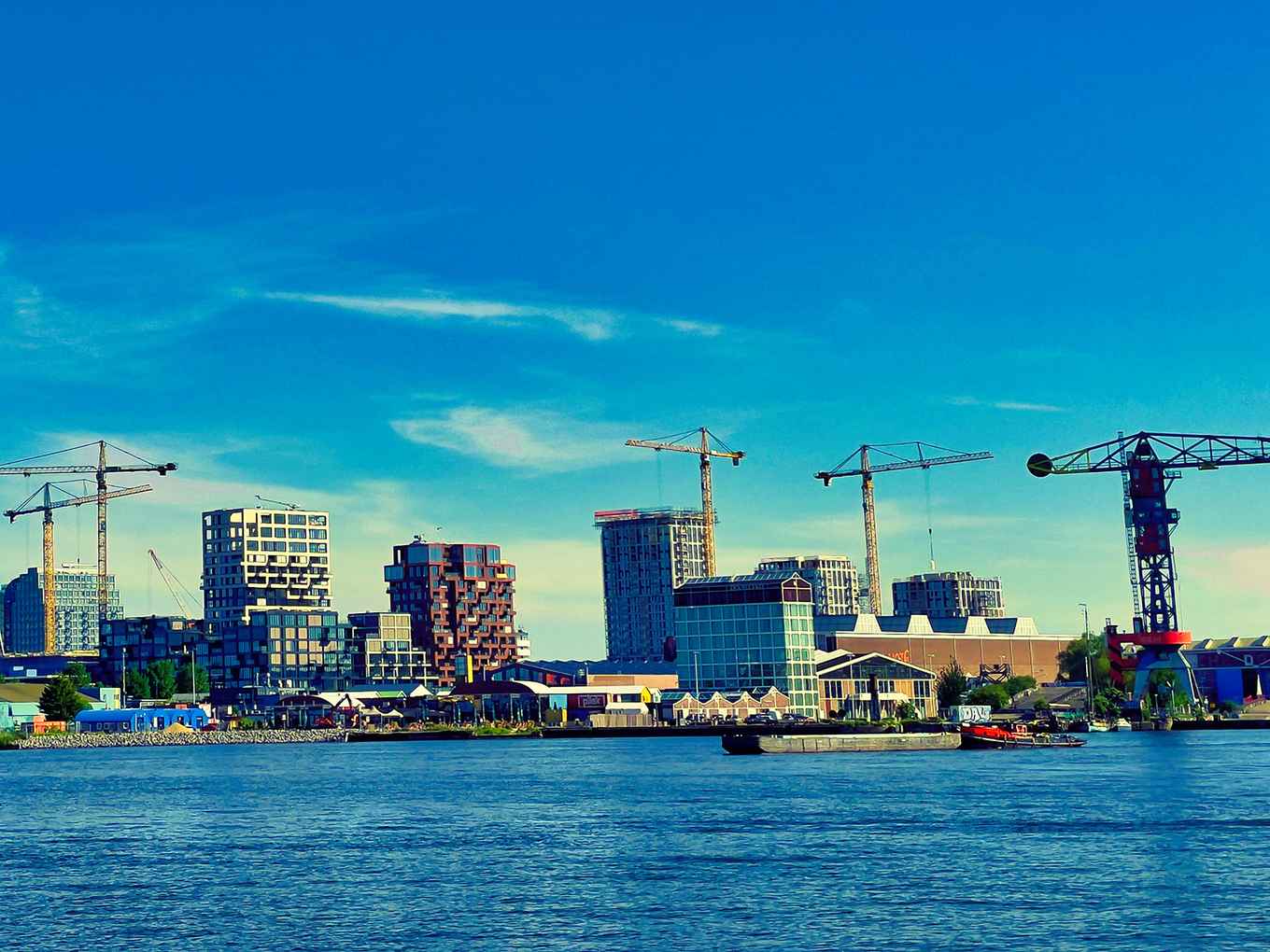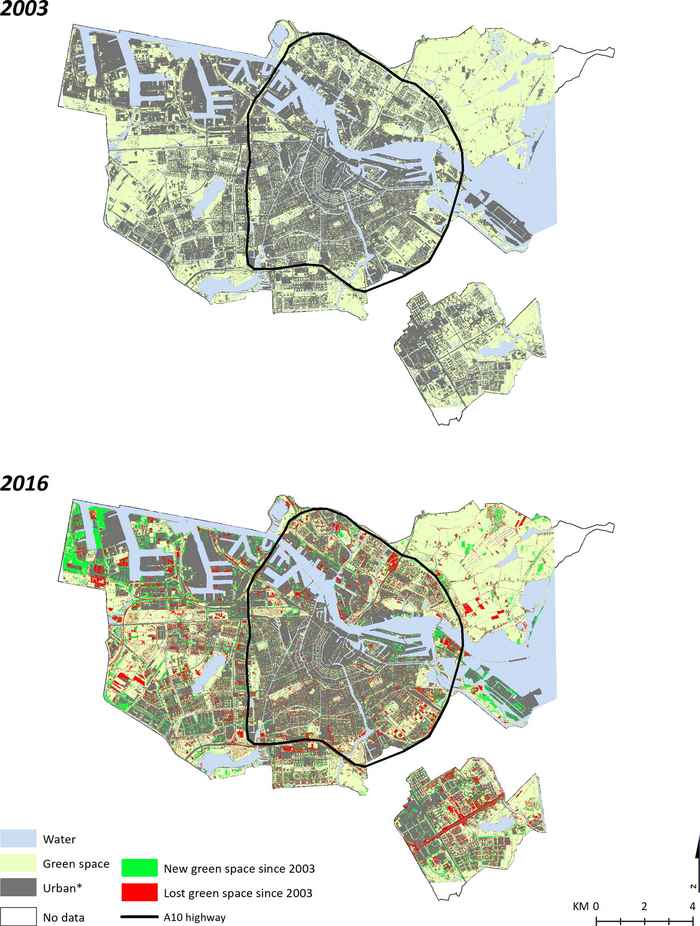Urban densification processes put increasing pressure on urban greenspaces
11 October 2021

Cities are confronted with the dilemma between planning a compact and a green city. Both compact city development and urban greenspace are argued to be important for sustainable development, yet densification within limited space is also shown to put green areas under pressure.
Satellite imagery to measure land-use change
Urban planning researchers Stella Balikçi, Mendel Giezen and Rowan Arundel from the University of Amsterdam studied the influence of compact city and urban greenspace policies on actual land-use change in Amsterdam and Brussels between 2003 and 2016. These cases were selected because of their similar urban growth yet diverse policy and governance contexts.
To explore the influence of spatial planning policies on land-use change, two research methods were applied: 1) GIS analysis, using quantitative census data and satellite imagery and, 2) analysis of policy documents complimented by in-depth interviews with key policymakers. They retrieved the satellite imagery from Digital Globe, a provider of high-quality satellite images.
Substantial loss of green space in both cities
The researchers find that urban densification processes put increasing pressure on urban greenspaces, as they reduce the abundance, connectivity and size of greenery in both cities. Additions of green space were insufficient to compensate for loss through new urban development.
A clear indication of this is the decrease of available green space per capita of 15.7% in Amsterdam and 26.5% in Brussels. At the same time, greenspace has become more fragmented. ‘Our study points to salient examples of greenspace loss within two contexts having stated policies to preserve and expand urban greenspace’, conclude the authors.
Integrative policy measures are needed
While densification is an important strategy in addressing housing and sustainability goals, ‘attentive and integrative policy measures seem necessary to overcome these conflicts’, state the authors. ‘Especially in the face of ongoing climate change, urban greenspace plays a valuable role in mitigating the effects of more extreme weather events such as heat waves and heavy rainfall. But greenspace also plays a crucial role for the physical well-being of urban dwellers. Without strong planning principles that mandate the provision of green space, its loss is inevitable in densification processes.’
Publication details
Stella Balikçi, Mendel Giezen and Rowan Arundel (2021), ‘The paradox of planning the compact and green city: analyzing land-use change in Amsterdam and Brussels’, In: Journal of Environmental Planning and Management

